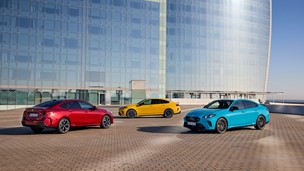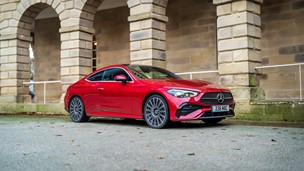The Golf is the third Volkswagen to get the BlueMotion treatment, after the Polo and the Passat, and it arrived in the UK early in 2008. At the time of writing there are three versions, two in S trim with a choice of three or five doors and the Match which is sold as a five-door only.The Match is the most expensive, on account of having more equipment than the S. At £16,750 it costs £515 more than the non-BlueMotion Match with the same engine, but it shouldn't take long to claw back that amount if VED and the London congestion charge develop the way they're currently intended to.As with the other BlueMotion Golfs, this one uses our old friend the 1.9-litre TDI turbo diesel engine, in this case producing 104bhp. A regular Golf of that description has a top speed of 116mph and a 0-62mph time of 11.3 seconds, and on the combined cycle it uses fuel at the rate of 56.5mpg and emits 132g/km of CO2.According to the official figures, the BlueMotion has exactly the same performance, but its combined economy figure is 62.8mpg and the CO2 rating drops to 119g/km. The reasons for the improvement include a lower ride height (to reduce drag), some aerodynamic tweaking of the front grille and the underside of the body, a tiny reduction in overall weight and the use of higher-ratio third, fourth and fifth gears.The most obvious advantage is that you pay less in tax. The drop below 120g/km of CO2 means that instead of paying £120 of VED this year you would instead pay just £35, and although the new taxation system (due to be introduced next April) actually reduces the BlueMotion's advantage over the standard car, there's still going to be a £60 annual benefit.The sub-120g/km CO2 figures also means that the Golf BlueMotion will become exempt from the London congestion charge in October, unless Boris decides to revise Ken's system before it comes into force. If you drive into the congestion zone every weekday you will therefore effectively reclaim your £515 within four months, regardless of any other considerations.For those of you who don't go anywhere near London, there are still savings to be made in terms of fuel economy. Very approximately, a BlueMotion should be able to go as far on nine tankfuls as a standard 1.9 TDI will on ten, leading to a saving of just over £10 per 1000 miles at current prices (though this does depend on your driving style and the types of road you use - basically the less city stuff the better).That should be enough for you to work out if the BlueMotion makes financial sense to you. None of it is apparent when you're actually driving the car - it's just a normal, not very high-spec Golf with the usual level of build quality and enough performance for ordinary everyday motoring.Sound levels are reasonably low (which is far from the case with the absurdly noisy Polo BlueMotion, and indeed all other diesel Polos), and certainly lower at cruising speed than they are in the standard 1.9 TDI Match thanks to the higher gearing. The gearing is probably the only difference you would notice between the two cars if you drove them both on the same day, though unless you're really pushing hard it's very unlikely that you'll feel the engine struggling against it in the case of the BlueMotion.If you really want to save money you would probably be better off buying a similar-sized car from a less obviously premium manufacturer, since the Golf isn't cheap (though it will probably do well come resale time). On the other hand, if you want the quality of a Golf along with lower running costs than the range normally provides, this is definitely the car for you.

Our Rating



